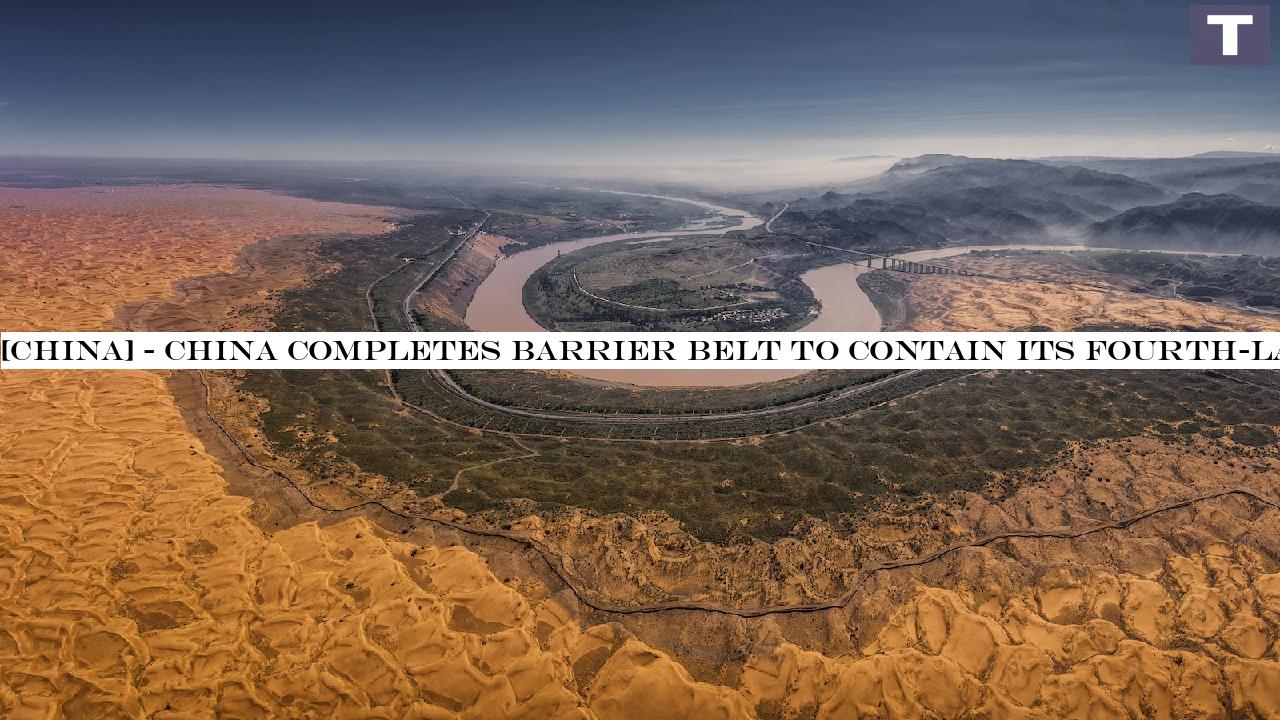
China on Monday reached a significant milestone in desertification control by completing a barrier belt along the southeastern edge of the Tengger Desert in its northwestern Ningxia Hui Autonomous Region.In Changliushui town, located in the city of Zhongwei, workers set up the final row of straw checkerboards, a conventional sand-fixing method, that locks the last stretch of shifting dunes in the Ningxia part of the Tengger Desert, following a sand control task covering more than 6 decades.This conventional sand-stabilization technique includes planting straw in a checkerboard pattern on the desert surface area to protect the sand and avoid wind disintegration.
This brand-new advancement marks the conclusion of a 153-kilometer-long green barrier belt in Ningxia, which ranges from 10 to 38 kilometers in width.Known as the desert edge-locking job, this technique was produced to support moving dunes by planting plant life belts around the deserts border, stopping additional expansion.
Sand control typically faces problems as fixed dunes can begin to move once again.
To resolve this, workers plan to plant turf and desert-adapted shrubs within the checkerboard grid once the rainy season starts.
When established, the vegetation is expected to protect the sand long-term.
The belt works as a natural defense line versus the eastward spread of the Tengger Desert, which stretches approximately 43,000 square kilometers.Zhongwei, located between the Qilian and Helan mountains, is the only entrance for the Tengger Deserts eastward growth.
Experts state the barrier will end up being a vital ecological buffer that stops further sand advancement and protects the Yellow River.Lu Qi, chief researcher of the Chinese Academy of Forestry, said the barrier belt can assist avoid the desert from more intruding on farmland, towns, sanctuaries and roadways, and likewise significantly reduce the source of sandstorms.The building and construction of the green barrier belt in Ningxia go back to the 1950s when the straw checkerboard method was developed to safeguard the Baotou-Lanzhou Railway, Chinas first desert railway.Local authorities have dealt with research study institutions to use new innovations in sand control, such as synthetic cyanobacteria sand crusts and improved straw checkerboards.Over the past 2 years, 2.6 billion yuan (about $363 million) has been purchased the building and construction of the belt, part of Chinas Three-North Shelterbelt Forest Program, the worlds largest afforestation program to take on desertification.After generations sand control efforts over the previous decades, the city has actually ended up desertification control on about 370,000 hectares of land, pushing the desert back by about 25 kilometers.
The green barrier belt is not just a method of ecological remediation, however likewise a key practice of harmonious coexistence in between humankind and nature, stated Lu.
It also uses an essential reference for the sustainable development of arid areas worldwide.
China has taken an active function in worldwide desertification control.
Because signing the United Nations Convention to Combat Desertification in 1994, the country has been a leader in halting land destruction and reversing desertification, and has actually continuously shared sand control experience, innovations and skill abroad.In its most current effort, the China-Central Asia desertification control cooperation center, based in Ningxia, was inaugurated in June to boost worldwide cooperation.
Our goal is to inject more Chinese momentum into worldwide environmental governance and sustainable advancement, said Dong Yanbiao, deputy director of the center.
He added that the center prepares to utilize innovation benefits, integrate domestic research and develop cooperation networks.(Cover: The Yellow River and the Tengger Desert, Zhongwei City, Ningxia Hui Autonomous Region, northwest China./ VCG)

 5
5







